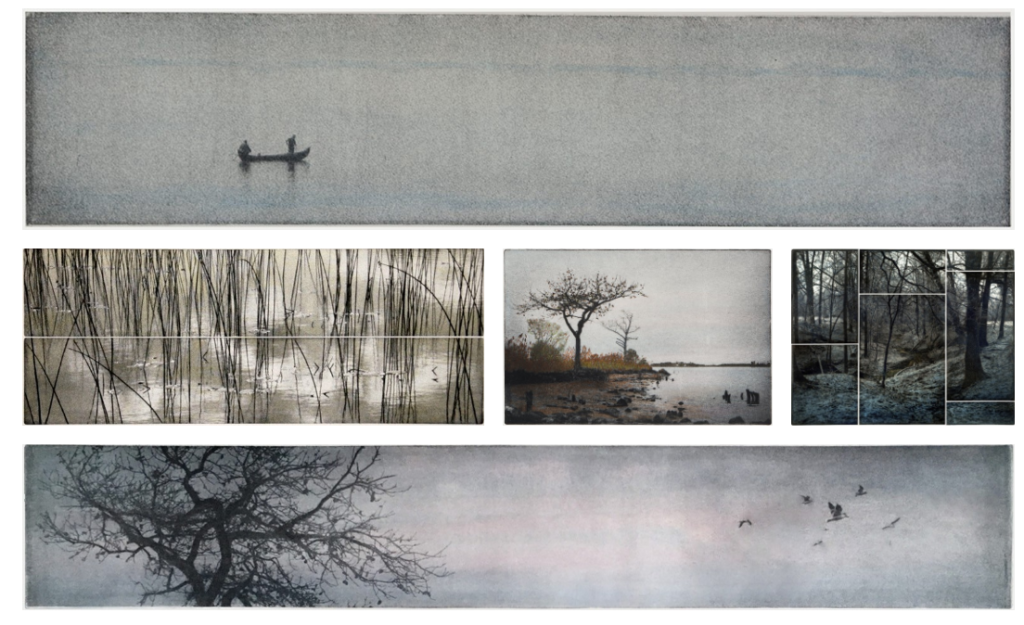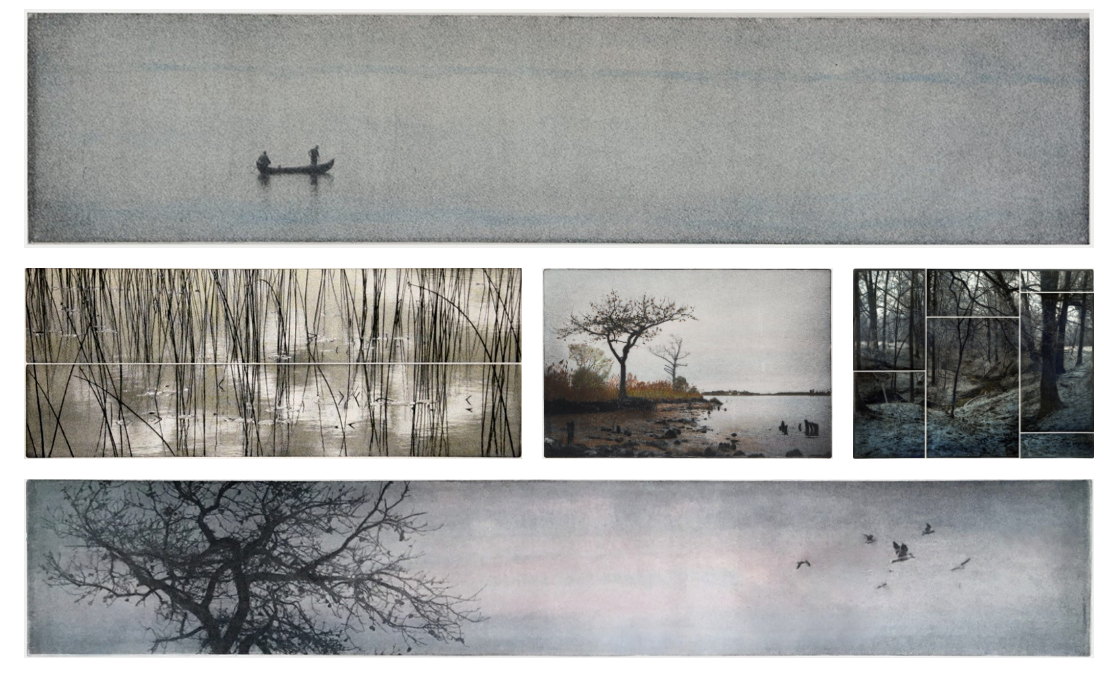

A current test chart hangs above the acid tray for reference. A five-second exposure creates a faintly perceptible gray tone when printed. A 20-minute exposure is a deep black. “I can achieve a wide range of tones by removing the plate any number of times and ‘stopping out’ the areas which I don’t want the acid to work on any more,” says Raab, “But it requires careful timing and I have to know exactly what tonal variations I want.” Once Raab is satisfied with the image (it mirrors what will appear on paper) he wants to print, then he pulls a series of artists proofs. He will vary the wiping of ink and determine the amount of pressure to be applied by the press’ rollers before he finds the right combination. “People tend to think of printmaking as a uniform process,” says Raab. “But with intaglio that’s not the case. Each print is individually inked and wiped and pulled by hand. There’s a real sense of brilliance and texture with an original print that you can never achieve with reproductions.”
For many years Raab considered introducing colour but it was not until he had worked monochromatically for almost 10 years that he felt ready. “I was looking for a way to express myself more specifically in terms of atmosphere, season and the time of day. I toyed with adding colour through the printmaking process but I found that watercolour gave me what I was looking for — a very soft, elusive wash-like quality. I didn’t want to paint my etchings but rather to enhance the details. Colour has allowed me to give more depth in terms of emotional values and has sharpened my perspective.”
Intaglio is an exacting art form. To retain a high-level of involvement in a piece that takes perhaps a month from concept to completion requires a special kind of discipline. Raab feels that despite the “incubation period” and the technical processes, intaglio is a deeply spontaneous form of expression. “The medium itself has something to say and I never know exactly what it is until I peel the print from the plate. There are always surprises.”
These wilderness cameos are meticulously realistic. Raab has no desire to alter the landscape he knows and loves so well. But in the realism he offers a spiritual interpretation. The cycle of life, growth, decay and death are confronted without equivocation. For Raab this is where it all began and this is where we should turn if we expect to find ourselves. It’s best expressed in the words he wrote one day sitting beside a pool dotted with giant lily pads. “It is in this mystical bog we separate realities on stumptops. And as the mist sets in, return to the same conclusions — the point where it all began. Where animals are, and life is not a gift. Where freedom is not another word, and the unknown prevails.”

